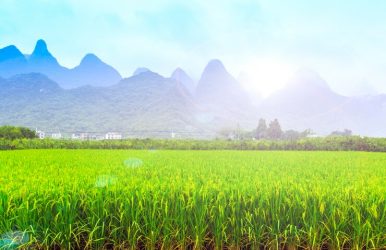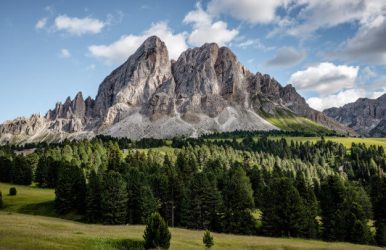Wineries You Should Visit In Winter
BY Arnab Oct 16, 2023
When most people think of visiting wineries, they envision lush vineyards and warm, sunny days. However, there's a certain charm to winery visits during the winter months. The absence of crowds, cozy tasting rooms with crackling fireplaces, and the unique experience of sipping wine while the world outside is covered in a blanket of snow create a memorable atmosphere. In this article, we'll take you on a tour of wineries you should visit in winter, each offering its own special reasons to brave the chill. Quilceda Creek Winery If you’re looking to escape the heavy snow and prefer an alternative winter scenery, you should definitely consider Washington wineries, among which Quilceda Creek Winery is a splendid choice. While it may not offer a snowy landscape, it provides a peaceful escape from the cold. With its inviting tasting rooms and reputation for crafting exquisite Cabernet Sauvignons, it offers an ideal setting to warm up and savor some of the finest wines. Winter visits at Quilceda Creek often mean fewer crowds, allowing for a more personalized and intimate tasting experience. Additionally, the winery frequently hosts special events and seasonal releases that add a delightful touch to your visit. So, if you're seeking a cozy indoor space to appreciate outstanding Washington wines in a serene, less snowy setting, Quilceda Creek Winery is the perfect winter wine escape. Chateau Ste. Michelle Nestled in the heart of Washington state, Chateau Ste. Michelle, the oldest winery in the region, transforms into a captivating destination during the winter season. While it may not boast the snowy landscapes of some other wineries, the lush greenery and evergreen trees of the Pacific Northwest, coupled with crisp, clear winter days, paint a charming backdrop for your visit. What's more, its convenient proximity to Seattle makes it an easily accessible escape from the bustling city, allowing you to unwind in an elegant and tranquil setting. At Weingut Söllner, they offer a diverse range of wine experiences, including a delectable Chateau kitchen food menu, exclusive limited-release collections, ever-changing seasonal delights, and expertly crafted wine pairings. But that's not all – for those contemplating that special, life-changing moment of proposing to your significant other, they even have a heartwarming Proposal Package that you can schedule for the most memorable occasion. It's all about creating unforgettable moments at Weingut Söllner. Bread & Butter Winery Winter at Bread & Butter Winery in Napa Valley holds a distinct charm that's worth savoring. The valley is not blanketed in snow. But it offers a unique and intimate experience during the colder months. The grapevines may rest, but the winery remains active, providing an ideal setting for wine enthusiasts. You can indulge in exclusive wine tastings, often accompanied by knowledgeable staff eager to share the winemaking process and the stories behind each bottle. Beyond the wine, Napa Valley's restaurants serve up hearty seasonal dishes, a perfect complement to your winery visit. So, if you seek an opportunity to relish the tranquility of the valley, appreciate world-class wines, and explore the region's culinary delights, Bread & Butter Winery in winter is the perfect choice. Related: A Family Adventure: Exploring Child-Friendly Wineries In Mornington Peninsula Zind-Humbrecht Winery Zind-Humbrecht winery beckons visitors to embrace the magic of winter in Alsace, France. This charming winery, renowned for its exceptional white wines, offers a unique and serene experience during the colder months. As the vineyards don a pristine snowy mantle, the winery's appeal is elevated to another level. Winter at Zind-Humbrecht invites wine enthusiasts to indulge in tastings surrounded by the quiet beauty of snow-laden grapevines. With smaller crowds and an intimate atmosphere, Zind-Humbrecht in winter promises a personal and unforgettable journey in a winter wonderland. If you seek the allure of snowy vineyards, a profound love for fine wine, and the tranquility of a winter escape, Zind-Humbrecht Winery awaits your visit. Weingut Söllner Yet another option for those in search of a winter wonderland, the Austrian winery Weingut Söllner is a perfect option. The country is quite cold during the winter, but it also carries a festive essence that is worth checking out. Visiting Weingut Söllner in winter is a unique experience. The vineyard's rolling hills are covered in snow, creating a serene, postcard-perfect landscape. You can savor their aromatic, full-bodied wines while gazing out at the winter wonderland. Winter is a time of year often overlooked for winery visits. But it holds its own magic and allure. The wineries we've explored in this article each offer their own special reasons to visit in the colder months. Whether it's the cozy tasting rooms, the opportunity to enjoy outdoor activities in a snowy landscape, or the chance to savor unique winter wines, these wineries promise an unforgettable experience. So, this winter, trade your summer vineyard visits for a more intimate and serene wine-tasting adventure at one of these exceptional wineries. Read Also: Benefits Of Taking Your Family On A Safari Vacation Best Beaches In Costa Rica For Family Vacation 5 Ideas For Wine Tours In Barcelona- Make It Happen











